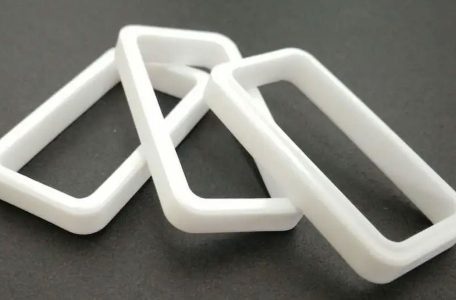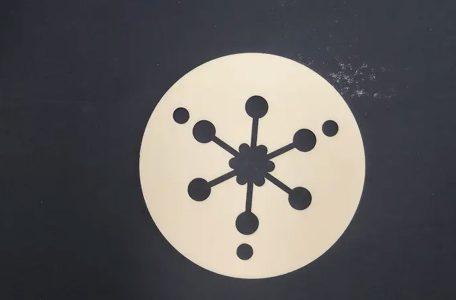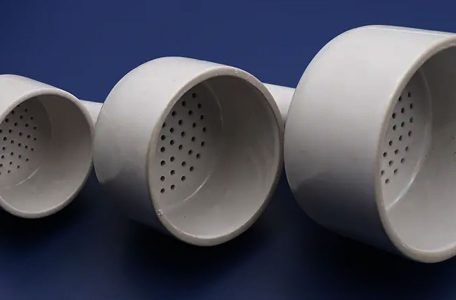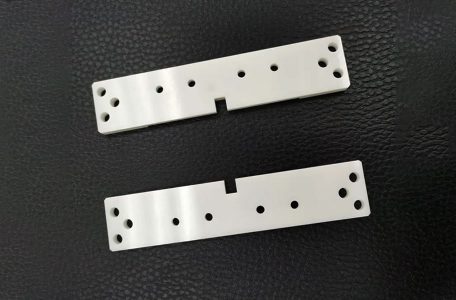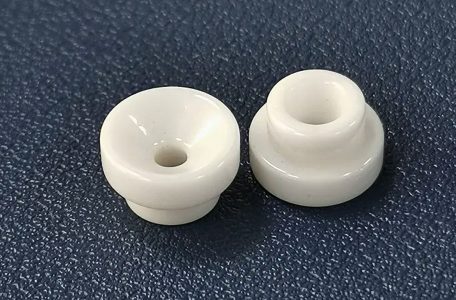Wear-resistant zirconia ceramic cutters manufacturers claim that zirconia ceramic cutters are ceramic inserts for high-tech cutting. Do you know the advantages of zirconia ceramic cutters? The following is an explanation of the advantages of zirconia ceramic cutters by Pintejin ceramic manufacturers. The advantages of zirconia ceramic cutter: 1. Corrosion resistance, extremely high corrosion resistance 2. Made of corrosion-resistant ceramics, suitable for corrosive cutting materials 3. Anti-static, no static load 4. Service life Longer, the service life is up to 6 times that of ordinary steel knives 5. Very wear-resistant, low friction coefficient, clean cutting edge The advantages of ceramic cutters, and then introduce the preparation of zirconia ceramic knives: 1. Read more
For ceramic knives, how much do you know about ceramic knives in addition to their performance? Next, Pintejin Ceramics Factory, a professional manufacturer of zirconia ceramics and alumina ceramics, will introduce the information about ceramic knife products to you. Zirconia ceramic cutting knife Zirconia material has excellent physical and chemical properties such as high hardness, high strength, high toughness, extremely high wear resistance and chemical corrosion resistance. Zirconia has been used in ceramics. Product Details: Is the ceramic knife made of ceramics? Are ceramic knives easy to use? The first brand of ceramic knives, Pintejin Ceramics Factory, tells you the secrets of ceramic knives and gives you a clear understanding Read more
Classification of advanced functional ceramics: (l) Piezoelectric ceramics Piezoelectric ceramics refers to a functional ceramics with piezoelectric effect, which is one of piezoelectric materials. The so-called piezoelectric effect refers to the phenomenon that the polarization (or electric field) is induced by stress, or the stress (or strain) is induced by the electric field. The former is a positive piezoelectric effect, and the latter is a negative piezoelectric effect. Electric effect. Piezoelectric ceramics is a kind of polycrystal. According to the crystal structure, there are perovskite type, tungsten bronze type, pyrochlore type, etc. Currently, perovskite type is widely used, such as barium titanate, lead titanate, zirconium titanium Lead acid, etc.Mainly used Read more
Zirconia ceramic materials can be processed to produce industrial ceramic parts, such as zirconia ceramic cutters. This kind of ceramic parts can play a great role in industrial equipment. Today, Pintejin Ceramics Factory will introduce the advantages of this ceramic to you. What is the relationship between zirconia ceramics and metal materials? Due to the use of zirconia ceramics, many products have been made, such as zirconia ceramic cutting knives, power circuits, instrument panels, smart transmitters and many other products. What is the relationship between this product and metal materials? This product is all made from the basic principles of metal materials, using the properties of zirconia ceramics. Therefore, zirconia Read more
The zirconia ceramic knife is made of zirconia ceramics. The ceramic blade is a new type of blade made of high-tech nanomaterial technology. So what safety precautions should be paid attention to when using the zirconia ceramic knife? Next, Pintejin Ceramics will introduce to you. When using zirconia ceramic knives, pay attention to the following points, which will minimize the unsafe problem of using zirconia ceramic knives. 1. Do not twist the blade during cutting, as this may easily deform or break the blade. 2. Do not use ceramic knives to cut frozen or not completely frozen food or items. 3. Do not wash ceramic knives in the dishwasher. You Read more
How can wear-resistant ceramics save costs better? Pintejin ceramics manufacturer is a manufacturer specializing in the production of wear-resistant ceramics such as zirconia ceramics and alumina ceramics. Next, Pintejin ceramics manufacturers will introduce to you how wear-resistant ceramics can better save costs. Wear-resistant alumina ceramic tube Wear-resistant ceramics When choosing wear-resistant ceramics as the lining plate of blast furnace top protection charging equipment, it is necessary to select wear-resistant ceramic materials with different properties according to the special operating conditions of blast furnace top charging equipment. However, wear-resistant ceramic is a new type of wear-resistant material. Since it is a non-metallic material, it is connected and fixed to the metal Read more
Ceramic materials are recognized as one of the most dynamic new materials in the 21st century due to their excellent wear resistance, corrosion resistance, high temperature resistance, low density and other properties. Next, Pintejin Ceramics will introduce the classification of ceramic materials and its Definition. By summarizing the characteristics and application fields of various ceramics, a new prospect is made for the future development of ceramic materials, and the application direction and development trend of ceramic materials are revealed. Functional ceramics refer to materials that mainly utilize their non-mechanical properties during application. Such materials usually have one or more functions, such as electrical, magnetic, optical, thermal, chemical, biological and other Read more
The precision ceramic parts we are familiar with include zirconia ceramics, alumina ceramics and other industrial ceramic parts used in various fields. With the progress of the times, the field of application of precision ceramic parts is also expanding. Ceramic machining manufacturers are also increasing day by day. Faced with so many ceramic machining manufacturers, how should they make better choices? The following is a key introduction to the professional ceramic machining manufacturer Pintejin ceramic manufacturer. Alumina ceramic tube The following three points are used to explain how to choose a reliable ceramic machining manufacturer. First, select a powerful ceramic machining manufacturer to purchase products based on demand. Different companies Read more
The main function of alumina ceramic ring is to provide a growth and breeding environment for nitrifying bacteria, thereby improving water quality. So what are the advantages and disadvantages of alumina ceramic ring? Next, Pintejin Ceramics will introduce to you. Alumina ceramics have low dielectric constant, low dielectric loss, high dielectric strength, high volume resistivity, good flexural strength, high stability, high compressive strength, and good thermal shock resistance. It is widely used in thermostats, insulating parts, various thermal equipment, electric and electrical equipment, iron-structured buildings, shipbuilding, etc. of various small household appliances. The advantages of alumina ceramic ring are high hardness, excellent wear resistance, corrosion resistance and high temperature resistance, Read more
In order to meet the requirements of preparing complex-shaped ceramic products, a variety of wet forming techniques have been developed and developed. As mentioned above, the molding object of dry molding is a mixture of ceramic powder and air. The purpose of molding is to make the mixture have a certain shape and strength, and to eliminate the air in the green body as much as possible. Different from dry molding, the molding object of wet molding is a colloidal system formed by mixing ceramic powder with water or other organic media. The purpose of molding is to make the colloidal system have a certain shape and strength, and eliminate Read more

Ceramic Machining Industry
- Ceramic Flange
- Ceramic Nozzle
- Ceramic Pin
- Ceramic Plunger
- Ceramic Rod
- Ceramic Shaft/Ceramic Sleeve
- Ceramic Structure Parts
- Ceramic Valve
- Ceramics Cutter
- Electronic Ceramics
- Medical Food Ceramics
- Petrochemical Ceramics
- Photovoltaic Ceramic
- Semiconductor Ceramics
- Microporous Ceramic Suction Cup
- Lithium Battery Ceramic Pump
